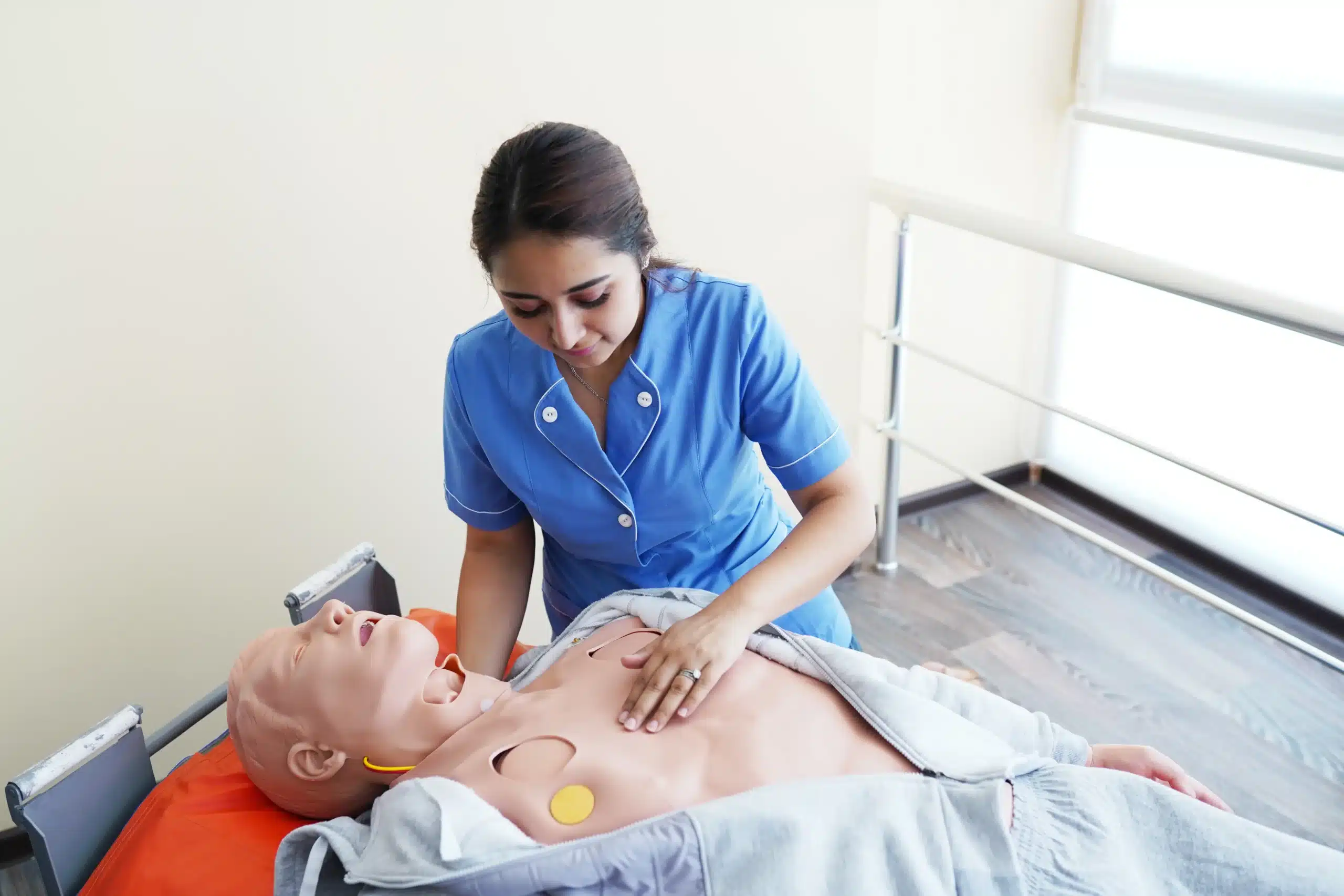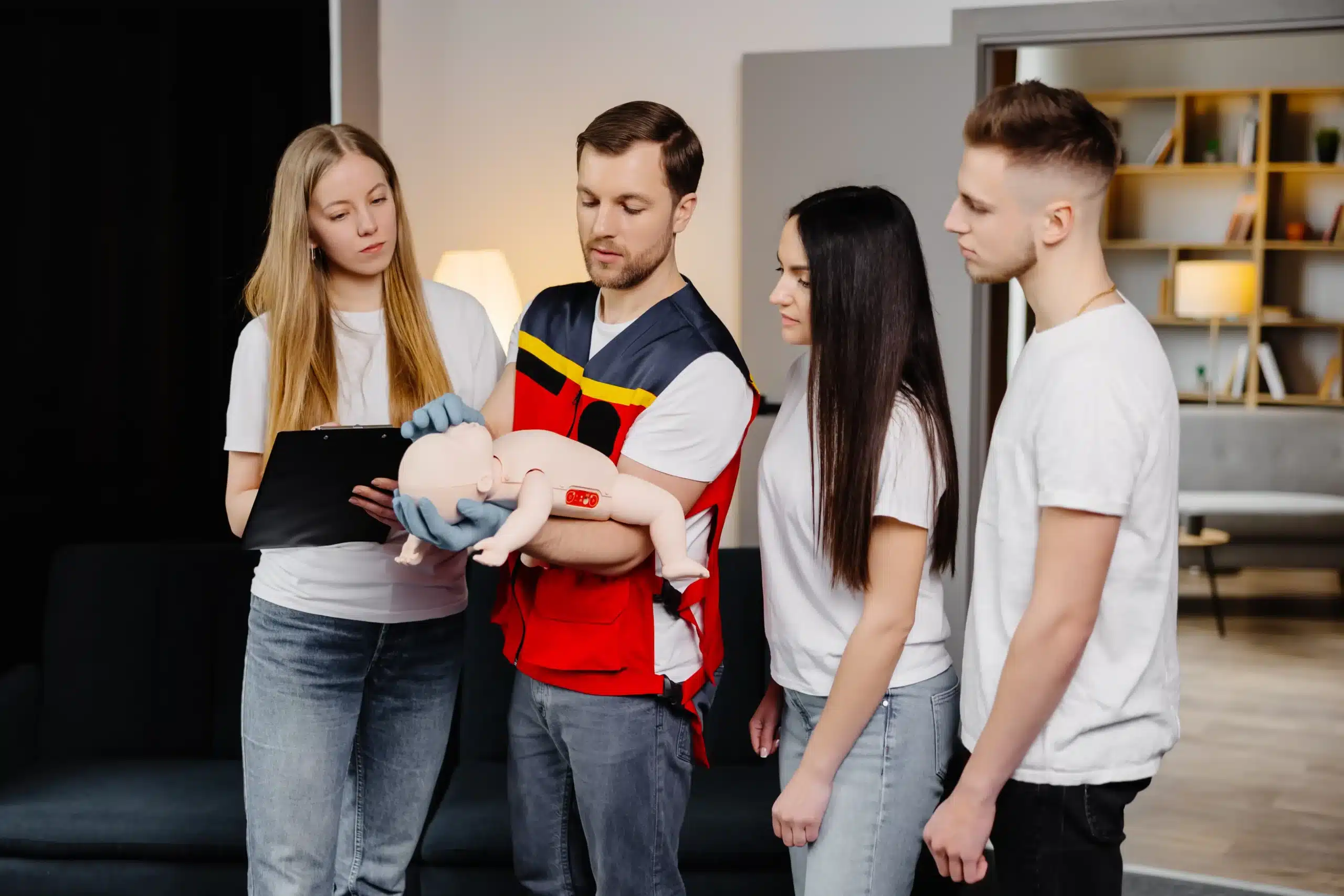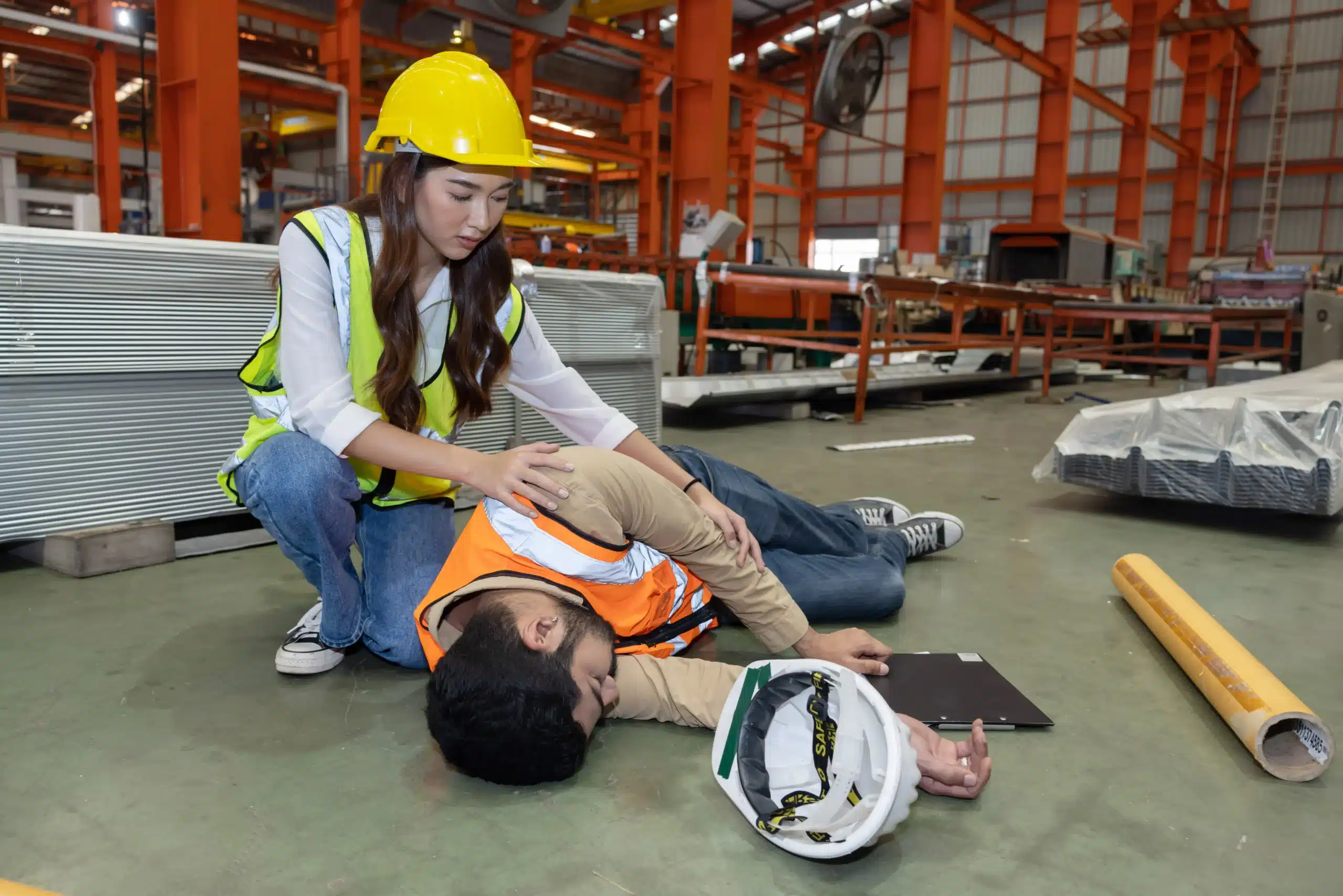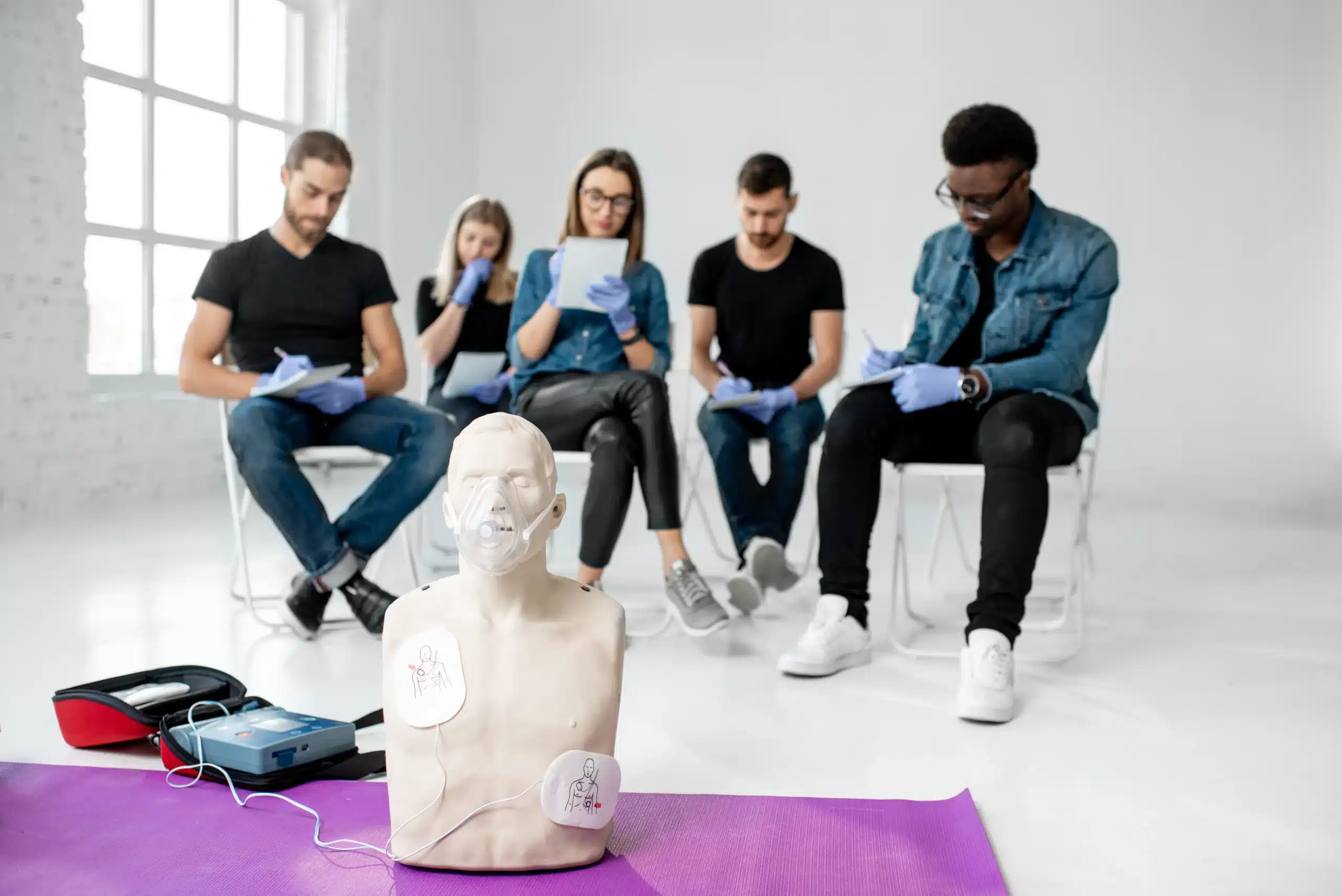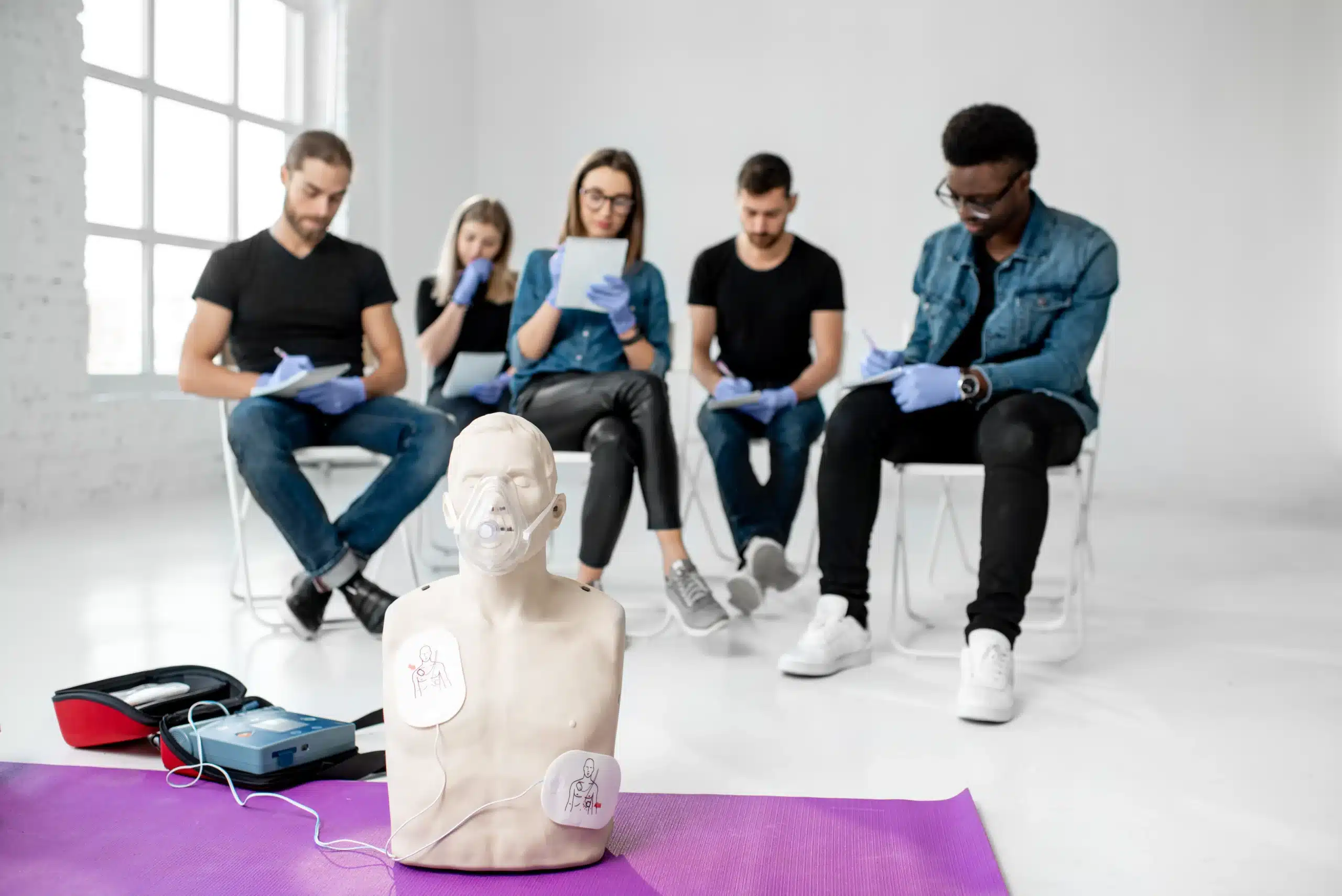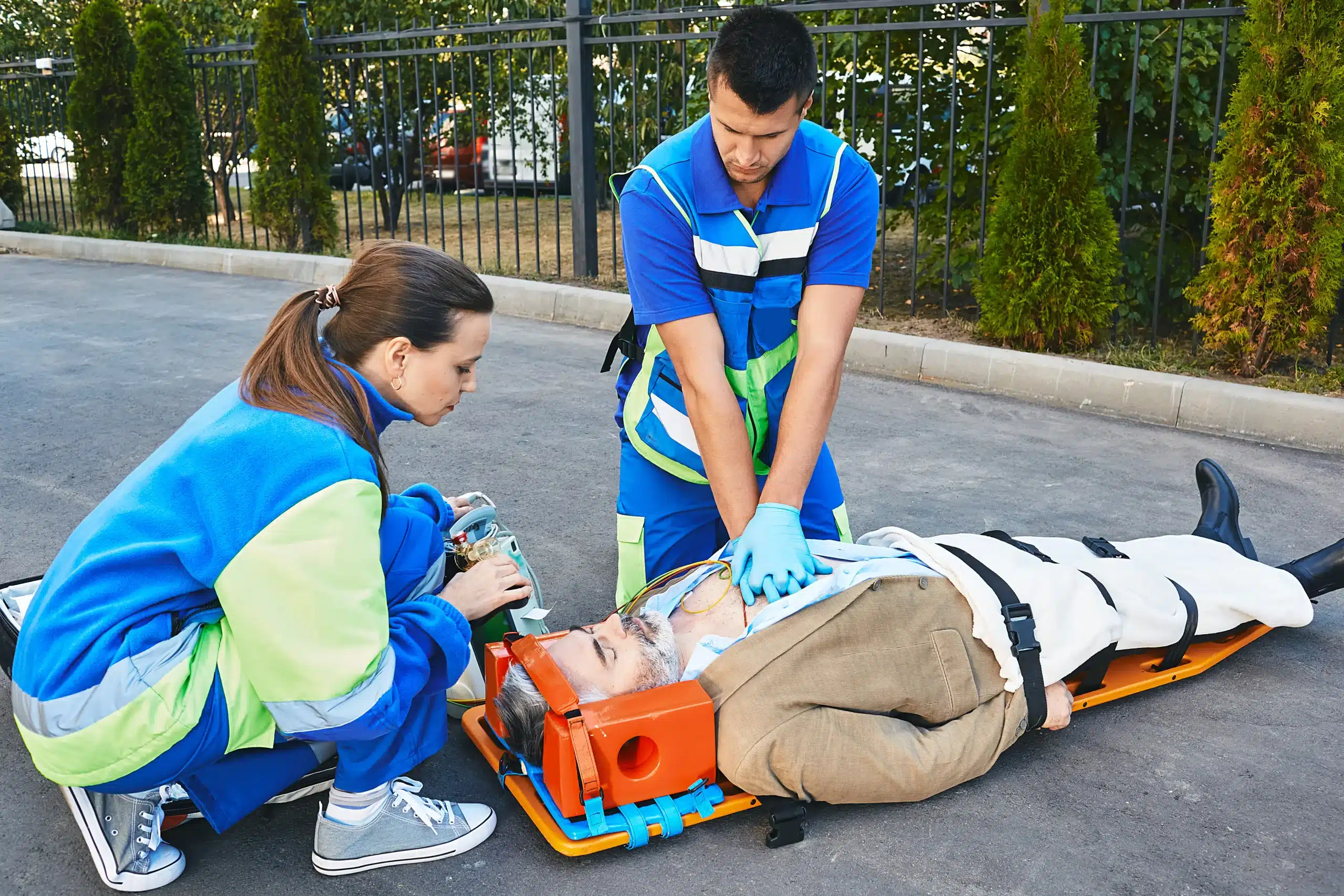Balancing work, family, and other commitments often leaves little room for extra training, even for something as important as CPR. But what if you could learn these life-saving skills on your own time, at your own pace, without sacrificing other priorities? Online CPR classes in Woodland make this possible. These blended learning courses offer a flexible and convenient way to become certified, combining online instruction with an in-person skills assessment. This article will delve into the world of online CPR classes in Woodland, exploring the benefits, available certifications, and how to choose the right course and provider to meet your specific needs.
Key Takeaways
- Online CPR classes offer flexible learning: Study at your own pace and schedule the in-person skills check when it’s convenient. This blended format makes CPR training fit easily into busy lives.
- Different CPR certifications exist for various roles: From healthcare providers needing BLS or ACLS to individuals wanting CPR/AED training, choose the certification that aligns with your specific goals.
- Select a reputable training provider: Opt for an organization offering American Heart Association-certified courses, like Davis CPR Classes, to ensure recognized, high-quality training.
What are Online CPR Classes in Woodland?
Online CPR classes in Woodland offer a convenient way to learn life-saving skills. These courses blend online instruction with an in-person skills assessment. This means you can study the course material at your own pace and then demonstrate your skills to a certified instructor. Online CPR training gives you the flexibility to fit certification into your busy schedule. You can access the online portion using your computer or tablet and complete it in segments whenever you have time. After finishing the online modules, you’ll schedule an in-person skills check and receive your certification. This blended learning approach combines the convenience of online learning with the essential hands-on practice needed for real-world scenarios. Several organizations, including Davis CPR Classes, offer this blended format, making CPR certification more accessible than ever. For medical professionals seeking a streamlined approach, the RQI program provides a fast, modern option with online learning, a skills test, and same-day certification.
Available Online CPR Certifications
Whether you’re a healthcare provider, a childcare professional, or simply someone who wants to be prepared for emergencies, understanding your CPR certification options is important. Several certifications cater to different levels of training and expertise. Let’s break down the most common online CPR certifications available in Woodland.
Basic Life Support (BLS)
The BLS certification is a foundational course for healthcare professionals and anyone involved in patient care. It covers core life-saving skills for adults, children, and infants, including CPR, AED use, and relief of choking. Davis CPR Classes offers a blended learning experience through the BLS HeartCode program, allowing you to complete the coursework online and then demonstrate your skills in a brief, in-person session. This flexible approach makes it easier to fit the training into your busy schedule. BLS certification is often a prerequisite for other advanced certifications. You can find BLS courses in Davis on our website.
Advanced Cardiovascular Life Support (ACLS)
The ACLS certification builds upon the BLS foundation, focusing on advanced life support techniques for adults. It’s designed for healthcare professionals who are likely to respond to cardiovascular emergencies. ACLS training covers topics such as airway management, rhythm recognition, and pharmacology. Like BLS, ACLS courses often use a blended learning format, combining online modules with hands-on practice and a skills assessment. For other health and safety training, check out our courses on EMSA Health, Safety, and Lead Poisoning.
Pediatric Advanced Life Support (PALS)
PALS certification focuses on the specialized skills needed to provide advanced life support to infants and children. It’s essential for healthcare providers working in pediatrics, emergency medicine, and intensive care units. PALS courses cover topics such as pediatric assessment, respiratory emergencies, and cardiac arrest management. The blended learning approach is also common for PALS certification, allowing you to learn the material online and then practice your skills in person.
CPR/AED Certification
CPR/AED certification is designed for the general public, providing essential skills to respond to emergencies involving adults, children, and infants. This certification covers basic CPR techniques, AED use, and choking relief. It’s a valuable credential for anyone who wants to be prepared to help in a medical crisis, including teachers, coaches, parents, and caregivers. CPR/AED training is often available entirely online, making it accessible to a wider audience. Davis CPR Classes offers a low price guarantee on our certification options.
Top Woodland Online CPR Class Providers
Finding the right online CPR class can feel overwhelming with so many options. To help you, we’ve compiled a list of reputable providers offering online CPR certification in Woodland.
Davis CPR Classes
Davis CPR Classes offers a convenient way to get your American Heart Association (AHA) CPR certification. This blended learning format allows you to complete the online portion at your own pace, then schedule an in-person skills session in Davis, conveniently serving Davis, Woodland, and Sacramento. This approach combines the flexibility of online learning with the essential hands-on practice needed for real-world scenarios. They also offer a low price guarantee for their courses. For those specifically looking for BLS training in Davis, you can find their course schedule here.
American Heart Association
The American Heart Association (AHA) sets the standard for CPR training. While they don’t directly offer online courses, they authorize training centers like Davis CPR Classes to deliver their curriculum. Look for AHA-certified courses to ensure you’re receiving high-quality, recognized training. Their website provides resources and information on finding certified training centers near you.
Red Cross
The American Red Cross is another well-known provider of CPR/AED and first aid training. They offer a variety of learning options, including online, in-person, and blended learning formats. Check their website for courses available in and around Woodland. Their flexible scheduling and diverse course offerings make them a good option for many.
Safety Training Seminars
Safety Training Seminars provides AHA-certified courses in a range of disciplines, including CPR, BLS, ACLS, PALS, and First Aid. They offer both online and in-person classes, often with daily availability, making it easier to fit training into a busy schedule. Their comprehensive approach to safety training makes them a valuable resource for healthcare professionals and the general public. They also offer specialized training, including courses on EMSA Health, Safety, and Lead Poisoning.
CPR Select
CPR Select offers affordable online CPR training, with courses starting as low as $44.95. While their focus is on providing cost-effective options, it’s important to verify the accreditation and acceptance of their certification for your specific needs. If budget is a primary concern, CPR Select might be worth exploring. Always double-check that the certification meets your workplace or regulatory requirements.
Benefits of Online CPR Classes
Online CPR classes offer a convenient and flexible way to gain this life-saving skill. Let’s explore some key advantages:
Flexible, Self-Paced Learning
Juggling work, family, and other commitments? Online CPR training offers the flexibility to learn at your own pace. Study whenever and wherever it suits you, making it easier to fit into your busy schedule. Then, simply schedule the in-person skills assessment at your convenience. This blended learning approach is perfect for those who need more control over their learning journey. Davis CPR Classes offers this convenient blended format.
Immediate Material Access
With online CPR courses, you get instant access to all training materials. No waiting for textbooks or class schedules. Start learning right away and prepare for your in-person skills check. This immediate access can be a real game-changer, especially if you need certification quickly.
Cost-Effectiveness
Online CPR classes can be more budget-friendly than traditional in-person options. Many providers, including Davis CPR Classes, offer competitive pricing and even a low-price guarantee. The blended learning format, combining online coursework with a shorter in-person skills session, often results in lower overall costs. For more information on blended learning costs, check out this resource on CPR class costs.
Certification Recognition
Worried about whether online certification is accepted? Rest assured, online CPR training programs, like those offered through Davis CPR Classes, are just as comprehensive as in-person classes and meet American Heart Association guidelines. These certifications are widely accepted where CPR certification is required, so you can confidently pursue your career or volunteer opportunities. For more insights into online vs. in-person training, take a look at this article comparing online and in-person CPR training.
Additional Resources and Support
Online CPR courses often come with extra resources to support your learning. Think videos, quizzes, and even online forums where you can connect with other students and instructors. These additional tools can enhance your understanding and make the learning process more engaging. You can explore available BLS courses in Davis on the Safety Training Seminars website.
Online vs. In-Person CPR Classes
Deciding between online and in-person CPR classes depends on your learning style, schedule, and preferences. Both options offer valuable training, but they cater to different needs. Let’s break down the key differences to help you choose the best fit.
Comparing Training Effectiveness
Online CPR training programs are just as thorough as in-person classes and are accepted in most places where CPR certification is required. Both formats cover the same core material, including recognizing cardiac arrest, performing chest compressions, giving rescue breaths, and using an AED. The main difference lies in the delivery method. Online courses offer the convenience of learning at your own pace, while in-person classes provide a more structured learning environment.
Hands-On Practice
While online courses excel at delivering theoretical knowledge, in-person training shines when it comes to hands-on practice. In a classroom setting, you’ll receive real-time guidance and feedback from certified instructors, allowing you to refine your technique on mannequins. This hands-on component is invaluable for building confidence and muscle memory. However, remember that even with online courses, you’ll typically complete an in-person skills assessment to receive full certification. This blended approach combines the flexibility of online learning with the essential practical experience.
Time and Accessibility
One of the biggest perks of online CPR training is its flexibility. Online learning allows you to learn at your own pace, fitting the coursework around your existing schedule. You can review materials as needed and schedule the in-person skills assessment when it’s convenient for you. This makes online training a great option for busy professionals, parents, or anyone with a packed schedule. In-person classes, while offering a structured learning experience, require a fixed schedule, which may not work for everyone.
Learning Environment and Engagement
Ultimately, the choice between online and in-person CPR training depends on your learning preferences and how you best absorb information. Some people thrive in a traditional classroom setting, benefiting from face-to-face interaction and immediate feedback. Others prefer the self-directed nature of online learning, where they can control the pace and environment. Consider what works best for you and choose the format that maximizes your learning potential. If you value hands-on practice and direct interaction, in-person training might be a better fit. If you appreciate flexibility and self-paced learning, an online course could be ideal.
Cost and Registration
CPR certification costs vary depending on the training level you need and your chosen provider. Understanding price ranges, potential discounts, and the registration process helps you find a course that fits your budget and learning style.
Certification Price Ranges
Basic CPR and AED training can start as low as $44.95 at some providers, like CPR Select. More advanced certifications, such as the BLS Provider course from Davis CPR Classes, typically cost around $120. This usually includes online materials, skills testing, and your certification card. Remember that pricing can change, so check the provider’s website for the most up-to-date information.
Group Discounts and Promotions
If you’re registering with a group, like coworkers or a community organization, ask about group discounts. Many providers offer reduced rates. Also, keep an eye out for promotional offers like seasonal specials or discounts for certain groups.
Choosing the Right Course
Choosing the right course involves balancing cost with your specific needs. While cost matters, prioritize reputable providers offering AHA-certified courses, like Davis CPR Classes. An AHA certification is widely recognized and reflects a high training standard. Compare pricing and course schedules from a few providers to find the best fit. Consider whether you prefer blended learning (combining online learning with in-person skills sessions) or a fully in-person class. Davis CPR Classes offers both, providing flexibility.
Account Creation and Enrollment
Once you’ve chosen a provider and course, registration is usually straightforward. Most providers, including Davis CPR Classes, allow online account creation. You can then select your course and schedule. For online courses, you’ll likely need a computer or tablet—a phone might not work. Davis CPR Classes offers courses every day of the week in various locations, making scheduling easier. After completing the online modules, you’ll schedule an in-person skills assessment.
Get Your Online CPR Certification
Getting your CPR certification online is straightforward. It’s a blended learning approach, combining online instruction with an in-person skills assessment. This lets you learn the material at your own pace and then demonstrate your skills to a certified instructor. Here’s how it works:
Complete Online Modules
Online CPR training offers flexibility, allowing you to learn at your own pace and on your own schedule. Access the online modules through your computer or tablet and work through the course material, which typically includes videos, interactive exercises, and quizzes. This part of the training covers essential CPR techniques, how to recognize a cardiac arrest, and the steps to take in various emergencies. Davis CPR Classes offers online modules for different certification levels, including BLS for healthcare providers.
Schedule In-Person Skills Assessment
After you finish the online modules, you’ll schedule an in-person skills assessment. This hands-on session lets you demonstrate your CPR skills to a certified instructor. The skills testing is often self-directed, using a voice-activated mannequin, to create a comfortable and efficient testing environment. While an instructor might not be present during the test itself, they are available by phone if you need help. You can find BLS course schedules in Davis on the Davis CPR Classes website. They also offer other health and safety training, including courses on lead poisoning prevention.
Receive and Validate Your Certification
Once you successfully complete the skills assessment, you’ll receive your CPR certification that same day. This means you’re immediately prepared to provide CPR in an emergency. Reputable providers like Davis CPR Classes ensure there are no hidden fees, so you’ll know exactly what to expect. They also offer a low price guarantee, making their training accessible.
Debunking Online CPR Class Myths
Let’s clear up some common misconceptions about online CPR classes. Many people wonder if online training is as effective as in-person classes. It’s a valid question, so let’s break down the facts.
Training Quality
One of the biggest myths surrounding online CPR classes is that they’re somehow less comprehensive than in-person training. This isn’t true. High-quality online CPR courses, like those offered by Davis CPR Classes, use the same American Heart Association guidelines as in-person classes. This means the online training program adheres to the same standards and curriculum used in traditional classroom settings. You’ll cover the same essential material and develop the same life-saving skills. Online CPR training often mirrors in-person classes.
Certification Acceptance
Another common concern is whether online CPR certifications are widely accepted. Rest assured, reputable online CPR training programs are just as thorough as in-person classes, and their certifications are accepted in most workplaces that require CPR certification. Always double-check with your employer or regulatory body to confirm their specific requirements. Generally, a certification from a recognized provider like the American Heart Association or the Red Cross obtained online is perfectly valid. Online CPR certifications are now widely recognized.
Hands-On Experience
Now, let’s address the elephant in the room: hands-on practice. While online classes excel at delivering theoretical knowledge and visual demonstrations, they can’t fully replicate the experience of physically practicing CPR on a manikin. This is why reputable online CPR courses, including those offered at Davis CPR Classes, require an in-person skills assessment. You’ll complete the online modules at your own pace, then schedule a short in-person session to demonstrate your skills to a certified instructor. This blended approach combines the convenience of online learning with the essential hands-on practice needed to become truly confident. If you prefer a highly structured environment with real-time guidance and feedback, consider supplementing your online training with additional in-person practice. In-person training offers immediate feedback.
Learning Effectiveness
Ultimately, the best way to learn CPR—online or in-person—depends on your individual learning style and preferences. Some people thrive in a traditional classroom setting, while others prefer the flexibility and self-paced nature of online learning. If you’re a visual learner, appreciate having immediate access to course materials, and enjoy learning at your own speed, then an online CPR class might be a great fit. Consider your learning preferences when choosing a CPR class format.
Choose the Right Online CPR Class
Finding the right online CPR class involves a bit of research to ensure it meets your specific needs and learning style. Here’s what to consider:
Assess Your Needs
Before browsing courses, think about why you need CPR certification. Are you a healthcare professional required to maintain BLS certification? Or are you a parent wanting a basic CPR/AED course for peace of mind? Online CPR training offers flexibility, letting you learn at your own pace and schedule the in-person skills assessment at your convenience. Understanding your needs will help you choose the right certification level.
Compare Provider Reputations
Not all online CPR certifications are the same. Look for reputable providers like nationally recognized organizations such as the American Heart Association or the Red Cross. Also consider local providers like Davis CPR Classes, which offer the same high-quality training with a local focus. Davis CPR Classes offers AHA-certified courses, ensuring healthcare providers stay current on life-saving practices. Reading reviews and checking provider reputations helps you feel confident in your training.
Consider Time Commitments
Online CPR classes offer flexibility, but you still need to dedicate time to the coursework and the in-person skills assessment. Consider your schedule and how much time you can commit to studying. The duration of BLS CPR classes can vary, so factor that into your decision. If you’re short on time, look for streamlined programs like the RQI program which offer a quicker renewal process for healthcare professionals.
Evaluate Course Content and Resources
When comparing online CPR classes, look at the course content, materials, and resources. Some courses may offer interactive simulations, videos, and downloadable resources. Ensure the course covers essential CPR techniques and provides ample practice opportunities. A good online CPR class should also offer support and answer any questions you have.
Related Articles
- CPR & First-Aid Training in Woodland: Your Guide – Davis CPR Classes
- CPR Certification in Woodland: Your Guide – Davis CPR Classes
- Advanced Cardiac Life Support in Woodland, CA – Davis CPR Classes
- HeartCode BLS in Woodland: Your Certification Guide – Davis CPR Classes
- CPR Training in Woodland: Your Complete Guide – Davis CPR Classes
Frequently Asked Questions
Are online CPR certifications valid? Yes, certifications from reputable online CPR training programs, like those adhering to American Heart Association guidelines, are widely accepted. Always confirm with your employer or regulatory body to ensure the certification meets their specific requirements. Many online programs, like Davis CPR Classes, offer AHA-compliant training.
What’s the difference between online and in-person CPR classes? Both online and in-person CPR classes cover the same core material and lead to valid certifications. The key difference is the delivery method. Online classes offer flexibility and self-paced learning, while in-person classes provide a more structured environment with direct instructor interaction. Most online programs include an in-person skills assessment component.
How much do online CPR classes cost? The cost varies depending on the provider and the level of certification. Basic CPR/AED courses can start as low as $45, while more advanced certifications like BLS for healthcare providers typically range around $120. Look for providers offering competitive pricing and potential discounts, such as group rates or a low-price guarantee.
What if I have a busy schedule? Can I still take an online CPR class? Absolutely! The flexibility of online learning is perfect for busy schedules. You can study the online modules at your own pace, whenever and wherever it’s convenient. You then schedule a short, in-person skills assessment to complete your certification.
How do I choose the right online CPR class? Start by identifying your specific needs and why you’re pursuing certification. Research different providers, checking their reputations and whether they offer AHA-certified courses. Consider the time commitment required and evaluate the course content, materials, and available resources. Look for a program that aligns with your learning style and offers adequate support.


